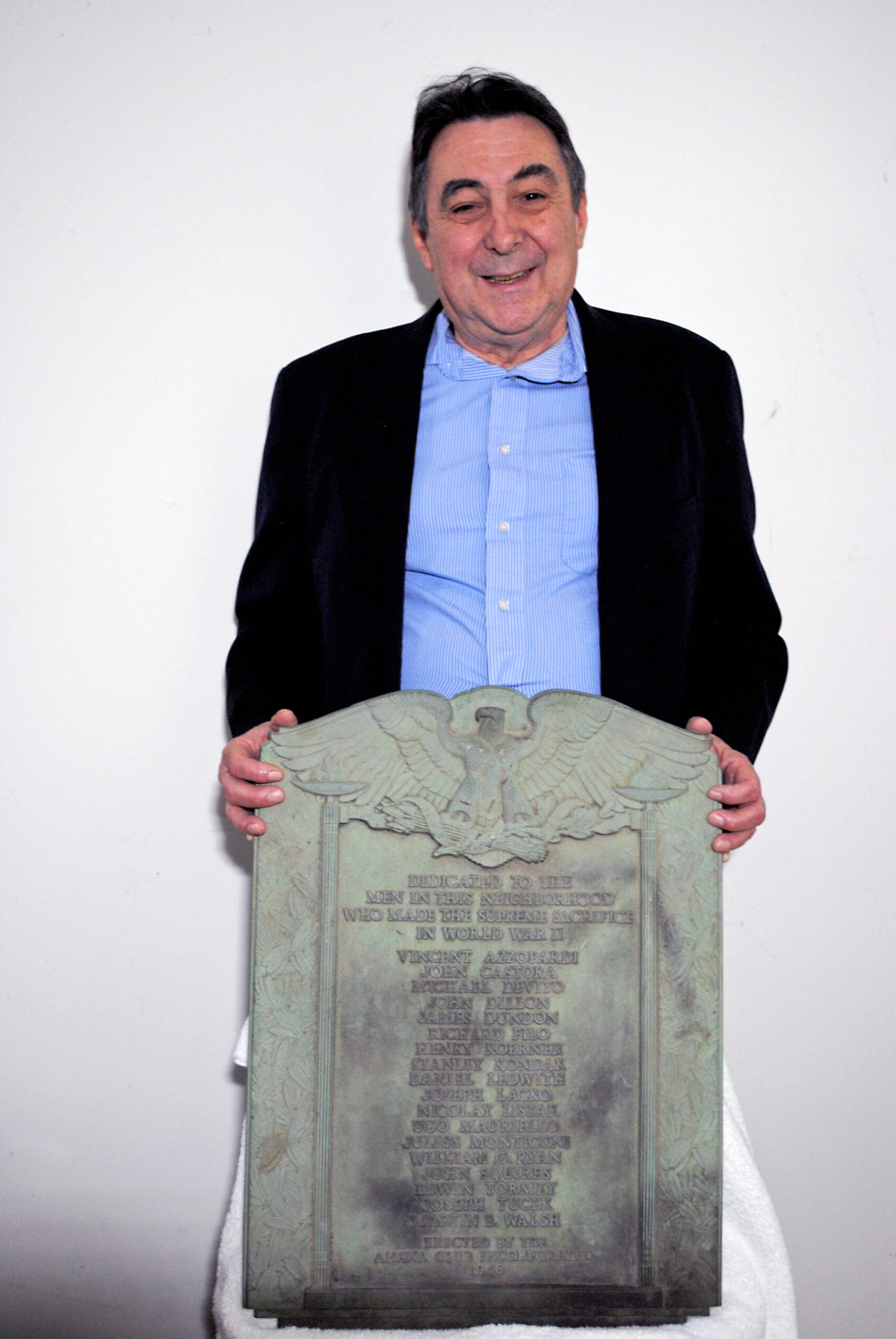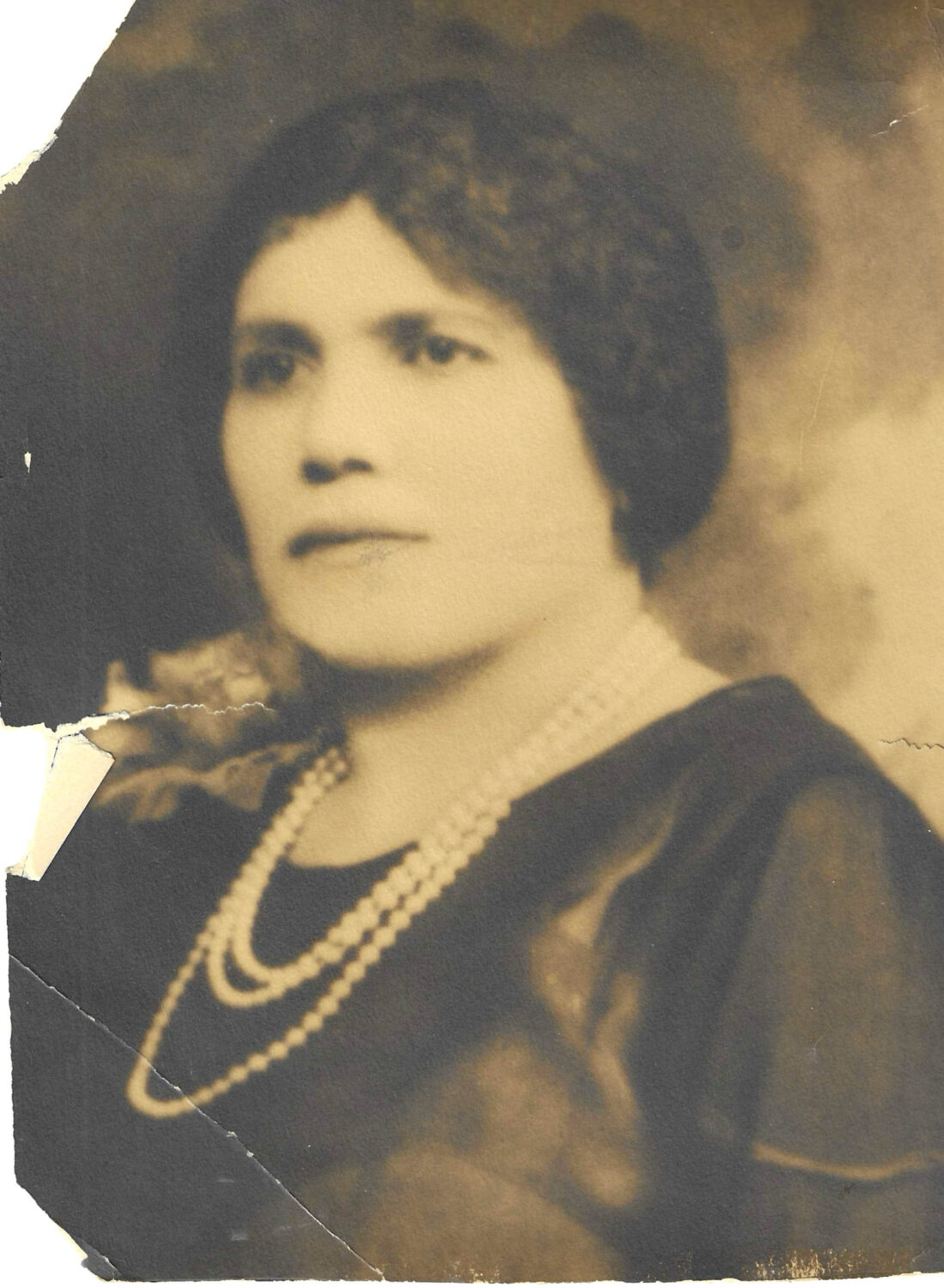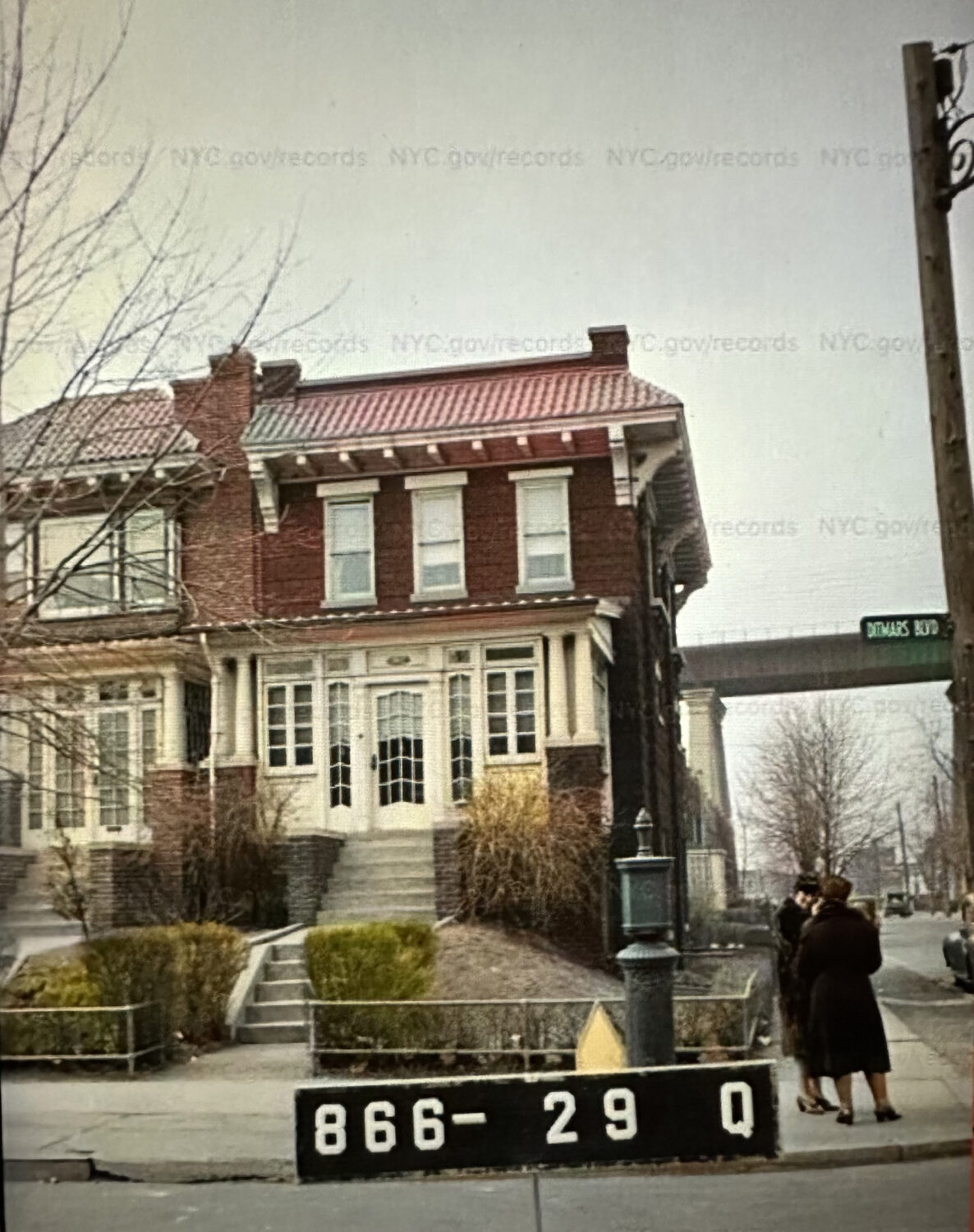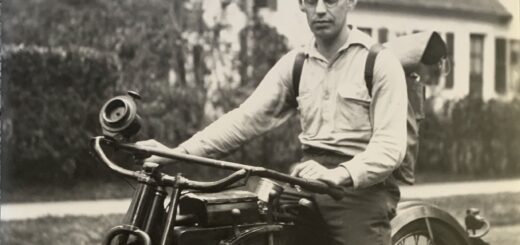Resurrecting The Memory of 18 Queens WWII Servicemen
Views: 599
Searching For The History Behind A Rare Memorial Plaque A Storied Plaque Seeks A Permanent Public Home

Paul Sapienza holding the Anawa Club plague honoring 18 WWII servicemen
It is always timely to honor the memory of America’s bravest. A large WWII Astoria memorial plaque from 1946 that features 18 servicemen, has not seen the light of day since 1993, but their spirit lives on throughout Queens and beyond. It is now in the possession of nearly 68-year-old Paul Sapienza, a Holbrook, Suffolk County resident, who is on a mission to research the history of the servicemen and secure a permanent public site for the plaque within Astoria, in order to educate new generations, to never forget those who made the ultimate sacrifice.

On December 6, 1946, Queens residents picked up a copy of the Long Island Star-Journal, which read, “Eighteen Astoria servicemen who were killed during World War II will be honored at the dedication of a memorial plaque bearing their names, Sunday at 2 P.M. on the corner of Ditmars Boulevard and 25th Street. The plaque was erected in honor of the neighborhood boys by the Anawa Club of 21-78 25thStreet, who previously sponsored a service flag and honor roll.”
As Sapienza conducted research, some of their last known residences, serial numbers, branches, and ranks were determined. The 18 names are Vincent L. Azzopardi (Pvt. rank, Army, 33-06 Ditmars Blvd), John J. Castora (PFC rank, Army, 32nd St), Michael Devito, John J. Dillon (Aviation Radio Man 3C, Navy, 21-24 31st St), James PJ Dundon (2nd Lieutenant, Army, 41st St), Richard Filo (Crescent St), Henry Koerner (Gunners Mate 3C, Navy, 932 Broadway), Stanley S. Kondak (Sgt, Army, 19th St), Daniel J. Ledwith (Pvt, Army, 21-68 19th St), Joseph Lacko (PFC, Army), Nicolay Liszak (29-07 with no street name), Ugo Mauriello (Sgt, U.S. Marine Corps, 23-11 23rd St), Julius J. Monticoni (2nd Lieutenant, Army), William G. Ryan (Staff Sgt, Army), John C. Squires (Tec 5, Army, 48th St), Edwin Tormey (Pvt, Army, 21-10 Ditmars Blvd), Joseph Tucek (Staff Sgt, Army, 19-22 Ditmars Blvd), Martin E. Walsh (1st Lieutenant, Army, 39th Pl).

Back in 1917, the Ditmars Avenue (later Ditmars Boulevard) train station opened at Ditmars and 31st Street. The elevated train line sparked Astoria’s residential development, where some of the earliest homes were erected in 1920 on Ditmars Boulevard between 29th Street and Crescent Street (25th Street). When Paul Sapienza’s grandfather, Salvatore Sapienza, purchased his home for the sum of $5,000 on July 31, 1924, a corner rowhouse at 25-02 Ditmars Boulevard, all land west to the East River and south to the Queensboro Bridge was open farmland. The earliest Catholic residents worshiped at Immaculate Conception Church, and initial services were held under a tent.
Sapienza explained, “During World War II, a social club, The Anawa Club, which was diagonally opposite at 21-78 25th Street (in back of the shops), approached my grandfather and requested permission to erect a wooden sign in our front yard, where they would list the names of servicemen who lost their lives. My grandfather agreed, and at the conclusion of the war, they again requested permission to erect a more permanent tribute to the fallen soldiers. Again, my grandfather agreed.” On December 8, 1946 at 2 PM, a dedication ceremony marked the unveiling of the new bronze plaque mounted on a granite stone, to honor the 18 servicemen.

Sapienza continued, “My grandfather lived at this house with his wife, my grandmother, Rachela and their two children; my father Paul and his sister Martha, both of whom served in uniform during the war. The house passed to my father, who married my mother Ann, where they raised their children, Paul, Ann, and Rachel. I have many fond memories of Veterans Day Parades, which would end in front of my house with a 21-gun salute to honor the war dead.” After his father’s passing, his mother sold the house in 1993, and the new owners requested the historic plaque’s removal after 47 years of bearing homage to America’s bravest. “No definitive reason was provided, although I recall often answering stranger’s queries, as to whether the plaque and marker were to commemorate an actual gravesite,” said Sapienza.
Sapienza was a 42-year phone company employee, which originated in 1978. At age 25, he relocated to Richmond Hill and began a family. Home ownership led to joining Community Board 9 and he served as Chair for the final two years out of a decade on the Board. In 2004, he relocated to Holbrook.
When Sapienza views the plaque, various emotions and thoughts surface. He is reminded how fortunate he is that his father survived the war, but if not, he would not have been born. “I always wonder if I would have known or been friends with the sons or daughters of the servicemen whose names appear on that plaque, if they lived to have families of their own. Afterall, they were from the neighborhood and of similar age to my father,” he continued.
Sapienza had much to share in the name of values when it came to his grandfather, and his consent for his home to accommodate the memorial plaque. “Besides proximity to the Anawa Club, the fact that my grandfather’s two children were serving in the war, I’m sure led to a sense of solidarity with neighboring families and their children serving. My grandfather was a proud immigrant from Sicily, who always insisted English be spoken in the house, as this was the language of his adopted country. He was proud to be an American and I’m sure this was his patriotic act as a proud American.”
Sapienza is on a mission as of several months ago, after realizing that enough time has passed since my retirement. “Any further delay in pursuing this lifelong goal was a disservice to the young men honored,” he said. Digging in the trenches of land transaction records, where some are only accessible by physically reviewing paper archives became a commonality. He also encountered web-based databases of census and military records.
Through 1940 census records and reviewing some military archives, it provided a foundation, where he identified their residence, branch of service, rank, and how the military notes their passing, such as “killed in action” or “died of their wounds.”
Sapienza is a man of wisdom. “It is my goal to learn more about these men, their families, ancestors and descendants, or those of siblings. Besides finding an appropriate place for the plaque’s public display, where their names can once again be spoken so they live on, I plan to create a researchable database about their lives and those of their families.” Then their spirit will resonate in the memories of a broad audience.
When asked how it feels to resurrect the memory of the 18 servicemen, Sapienza responded, “It is a duty as a descendant of the original caretaker of this plaque, my grandfather, to restore this tribute to these soldiers to a rightful place in the community. I don’t think I will feel any sense of service until I complete this task.”
The plaque is a beacon of light in the name of its historical and artistic value. “This is a tribute to the men of Astoria who made the ultimate sacrifice in a war so global in scope, that the world would be fortunate never to experience it again,” said Sapienza. He began a dialogue with several foundries and metal works firms regarding his goal of restoration. “I have only encountered awe at its workmanship and detail. Even its patina is revered for the time it takes to develop, and without beating a dead horse, think of the Statue of Liberty,” he continued.
As Sapienza began conducting research, with hopes of also resurrecting the plaque publicly nearby its origins, his goal was to find a local veteran’s group, but after finding no Astoria American Legion Hall, he approached the American Legion Continental Post 1424 in Forest Hills, within the boundaries of Community Board 9, where he formerly served. He met 1st Vice Commander Pat Conley, who is greatly supportive of his mission.
Conley said, “When you see a photo of this plaque, it tells a story of the era of WWII. You also see the inscribed names, which makes you think about the 18 casualties as for how young they were, what they could have become today, and if their families still live in the neighborhood, and what it would mean by seeing their names and knowing they are being remembered. It also represents different ethnic backgrounds and immigration into Astoria.” He continued, “The least we can do is once again publicly display the plaque within the neighborhood and preferably in Astoria Park, near the WWI memorial. It is important and would let everyone know that we haven’t forgotten the ultimate sacrifice of young veterans from the neighborhood, so we can enjoy our freedoms today. Eighteen casualties is a lot. WWII may seem like long ago, but we should never forget even one veteran.”

As pursuant to the American Legion, Conley emphasized observing Memorial Day as among the most meaningful ways to remember fallen heroes. “It’s really not about the beach and barbecues, but a parade to remember the over one million veterans who sacrificed their lives. It is important for our country’s youth and residents at large to realize the sacrifices. It wasn’t only a young soldier who died, but someone who had a family.”
Sapienza shared how to best remember our heroes and referenced an old Roman belief, where you live as long as your stories are told, but you only truly die when you are forgotten. He explained, “In Dan Brown’s novel ‘Inferno,’ the phrase “so long as they speak your name, you shall never die” is featured, and a person’s memory lives on, but I think it is a little more complicated than that. How many times have you looked at a street name or a highway and recognized it as a person’s name, but didn’t know their story? Take the Hutchinson River Parkway, named after Anne Hutchinson (1591-1643). In the spirit of ‘Inferno,’ she lives simply by speaking her name, but knowing her name and accessing information recorded in books and on the web, tells a story about who she was, and then she lives.” “How much more alive would the 18 servicemen be, if we knew something about them other than their name?” he asked.
The public can become team players in a noble cause. “My hope is that the community will share my commitment to restore this commemorative plaque and help find an appropriate and fitting public resting place, so future generations of the Astoria community among others, can observe and celebrate the sacrifice given by their fellow citizens. We might enjoy the freedom and democracy that we sometimes take for granted. Speaking their name will keep them alive, but learning about their lives and history will bring them to life,” said Sapienza.
To volunteer by providing leads on the 18 servicemen and their descendants, and research, including the long decommissioned Anawa Club, as well as offering a permanent public display within Astoria, contact Paul Sapienza at sapienza8405@gmail.com




Oh my goodness! Impresive articfle dude! Thanks, Hoowever I
aam going through issuyes with your RSS. I don’t understannd thee
reason wwhy I can’t subsccribe tto it. Is tere anyhody eelse getting similar RSS issues?
Anyone whoo knows the solution cann youu kindly
respond? Thanks!!